Prevention of occurrence and effective methods of treatment of peronosporosis of cucumbers
When growing cucumbers, gardeners are often faced with a wide variety of diseases plants. One of the most dangerous is peronosporosis. If cucumbers are not treated, the foliage of the affected plant dries out, after which it dies.
Diseased cucumber bushes are a depressing sight. The gardener thinks not only about the loss of the harvest, but also about the contamination of neighboring plants and related crops. How to help cucumbers with peronosporosis and what to do to prevent the disease in the future, we will tell you in this article.
What is peronosporosis
Downy mildew cucumbers (downy mildew) is a fungal disease caused by lower fungi, oomycetes.
Cucumbers, like other plants of the pumpkin family, are attacked by Pseudoperonospora cubensis.
Pathogenic spores persist on plant debris and in the soil. In spring they are carried by wind and raindrops.
Penetration and infection are facilitated by mechanical damage to plants.
Downy mildew is found everywhere: cucumbers can get it both in open and closed ground, that is, in greenhouses and greenhouses.
Why are cucumbers dangerous?
The harm of peronosporosis lies in damage to the leaf apparatus of the vegetable. The tops turn yellow and die, and photosynthesis processes are disrupted. Plants may die within a week.
Even if the infected bush blooms and bears fruit, their quality and quantity will be extremely low.Losses due to disease account for 30-100% of the crop.
Symptoms of the lesion
Downy mildew is diagnosed by several characteristic features. Our photos will help you identify the disease.
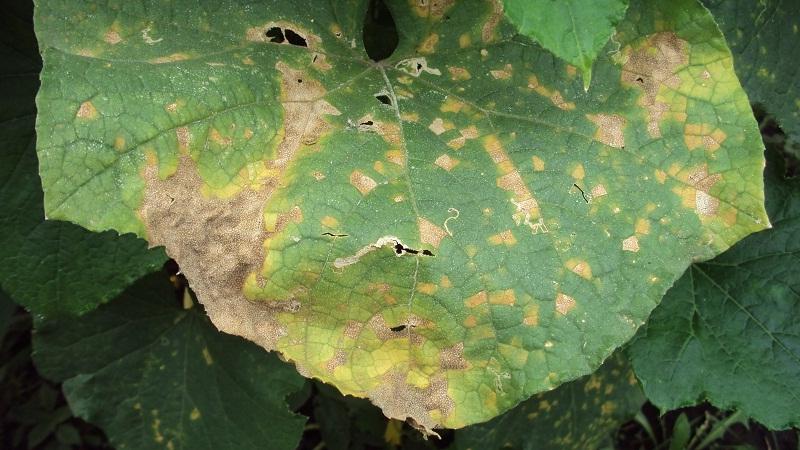
External signs
Yellow angular spots appear along the veins on the upper side of the leaf. Over time, the lesions acquire a brown tint. The edges of the leaves turn upward.
After 1-2 days, a grayish or whitish coating appears on the back side of the leaf blade.
Infected plants are stunted in growth, stems and root systems weaken. The affected tissues have a faded, limp appearance.
Stages of development
Downy mildew develops rapidly. The incubation period at a temperature of 18ºC and 100% relative humidity is three days.
The disease occurs in several stages, which quickly replace each other:
- At the initial stage, yellow spots appear.
- The affected areas become oily. On the reverse side of the leaf, spore-bearing organs sprout - areas of grayish or white coating, velvety in appearance.
- The spots turn brown and increase in size.
- The foci of infection merge. The leaf dries out and falls off.
- The final stage is characterized by large-scale death of the leaf apparatus and death of the plant.
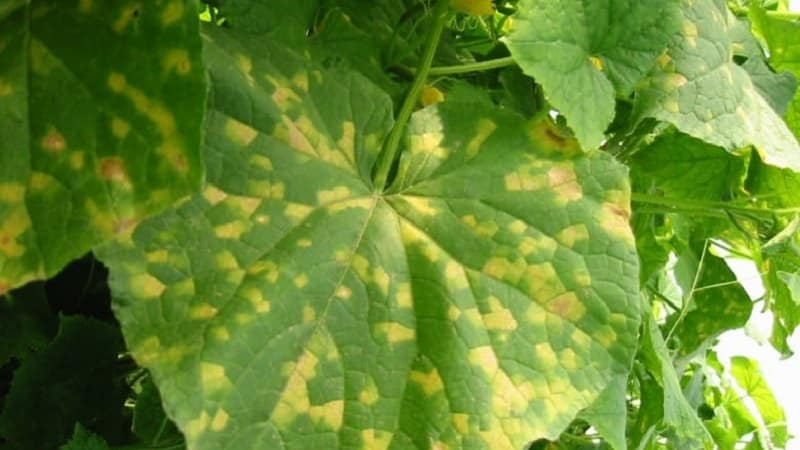
Risk factors
A decrease in air temperature to 15-20 º C and rainy weather increase the risk of infection. Planting cucumbers in shaded and poorly ventilated areas contributes to the development of the disease.
Too dense plantings, insufficient insolation, and relative humidity above 80% are risk factors for greenhouse vegetables.
Treatment of cucumbers
Oomycetes are not easy to eradicate. It is unlikely that it will be possible to completely save the crop, but it is possible to help the plants.
Destruction of affected areas
When a small number of leaves are affected, they should be removed without regret and destroyed outside the site. This will help prevent the spread of infection.
However, one cannot limit oneself to such a measure.
Agrotechnical techniques
Agrotechnical control measures include:
- Regular weeding and removal of plant debris. This technique promotes better ventilation of plants.
- Timely and reasonable feeding. Gardeners note that the degree of infection increases with a lack of potassium and phosphorus, as well as with an excess of nitrogen.
- Ventilation of greenhouses and removal of overgrown shoots.
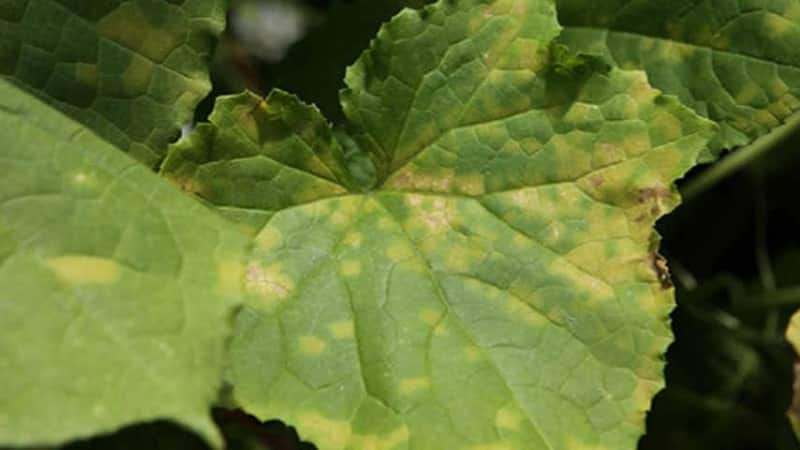
Biological agents
Fungicides of biological origin are recommended for use in the initial stages of the disease or for prevention. As an example, here are a couple of drugs:
- "Trichodermin." Contains live spores of the fungus Trichoderma sp. When they germinate, they release antibiotics and substances that have an antifungal effect. The drug is available in the form of a powder or aqueous suspension. To spray plants, prepare a working solution from 20-40 ml of liquid or 20-40 g of powder and 5 liters of water. Consumption - 5 liters per 1 hundred square meters.” Trichodermin" is used at a temperature not lower than 18 º C, otherwise beneficial spores are not activated. Safe for bees. May cause allergic reactions upon contact.
- "Planriz." Created based on living soil bacteria Pseudomonas fluorescens, which produce natural fungicides. The product is produced in the form of a liquid in bottles of various sizes. To prepare the working fluid, take 10 ml of the mother solution per 10 liters of water. Root spraying is carried out at the rate of 0.5-1 liters per 1 m². Safe for humans and insects.The shelf life of the drug is limited to three months.
Important! Biological products are incompatible with any pesticides. They should be used no earlier than two weeks after the last chemical treatment.
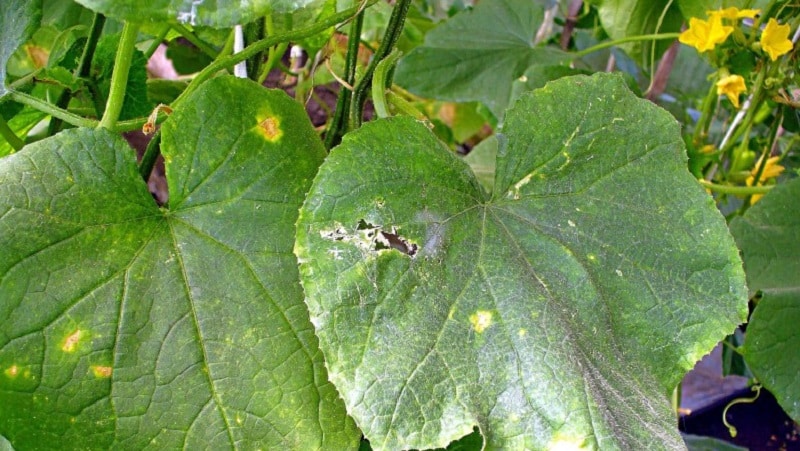
Chemicals
If time is lost and the infection has spread throughout the cucumber bed, only chemicals will help
The following drugs are suitable for the treatment of peronosporosis:
- Previkur Energy. The active ingredients are propamocarb hydrochloride and aluminum fosetyl. The drug has a narrowly targeted effect and destroys exclusively oomycetes, which include the causative agents of peronosporosis. 25 ml of the product are diluted in 10 liters of water and watered at the root, avoiding contact with the leaves. The consumption of the working solution is approximately 10 liters per 1 hundred square meters. A maximum of three treatments are carried out with an interval of 10-14 days.
- "Kuprolux". A preparation based on cymoxanil and copper oxychloride of contact-systemic action. Low danger to bees and humans. Available in the form of a wettable powder. For spraying, prepare a solution of 25-30 g of the substance and 10 liters of water. Treatment is carried out no more than three times per season with a break of 10-12 days.
- Copper oxychloride (“CHOM”) is an inexpensive drug with protective contact action, recommended for use as a prophylactic agent. The frequency of treatments is three times per season with an interval of about two weeks. Liquid for treating plants is prepared from 40 g of the substance per 10 liters of water. Spraying is carried out at the rate of 1 liter per 10 m². Poses moderate danger to humans.
Important! To preserve the effect of chemicals, you need to carefully treat the underside of the sheet.
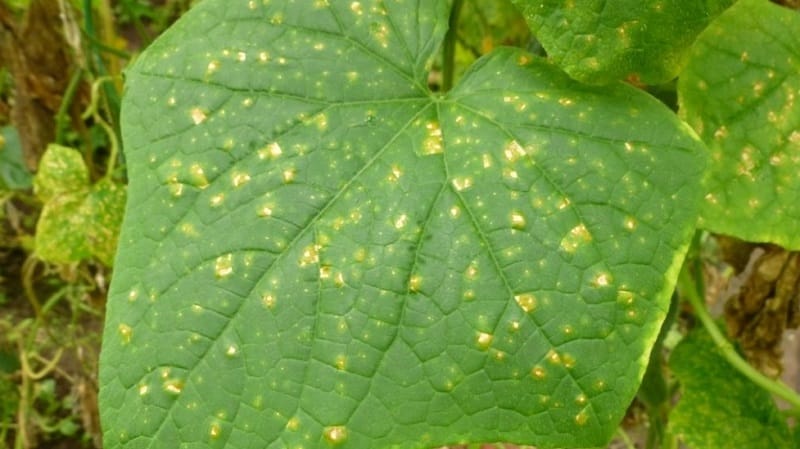
Traditional methods
Traditional methods are safer, but not as effective as pesticides. Most often they are used as preventative measures or at the very beginning of the disease.
Experienced gardeners advise trying several recipes:
- Soda. Dissolve 40 g of baking soda in 5 liters of boiled water, add 15 ml of liquid soap. Spray the bushes and soil with the resulting mixture once a week.
- Onion peel. Pour 500 g of onion peel into 10 liters of water and boil. Leave to infuse in a dark place for 1-2 days. Strain the infusion and spray the cucumbers several times a month.
- Potassium permanganate. Spray the plants with a weak solution of potassium permanganate (1-1.5 g per 10 liters of water) once a week.
- Milk serum. Add 30 drops of pharmaceutical iodine and 30 g of grated laundry soap to 1 liter of whey. Spray the bushes as a preventative measure once every 10 days.
Features of treatment in a greenhouse and open ground
The principles of treatment of peronosporosis are common for indoor and open ground.
The difference is that it is easier to regulate the microclimate in a greenhouse. To reduce humidity, ventilation is carried out more often. Bricks or stones are used to maintain temperature. They warm up during the day and give off heat at night. Water containers work on the same principle.
Special care should be taken when using chemicals in a greenhouse. After treatment, it is recommended not to enter the room for a day.
Preventive measures
Prevention of downy mildew is simple. A number of measures will help protect plants:
- In the fall, be sure to remove all plant residues from the beds and burn them.
- Cucumbers are not planted in the same place year after year.
- Before planting, treat the seeds in a 0.1% solution of potassium permanganate for 30 minutes.
- They follow the rules of agricultural technology: they regularly weed the beds and apply fertilizers in accordance with the needs of the plants.
- To increase the immunity of vegetables, stimulating drugs are used: potassium humate, Gumistar, Baikal EM-1.
- Water the cucumbers only with warm, settled water.
Resistant varieties and hybrids
Planting plants that are resistant to it will help reduce the risk of downy mildew. There are no cucumber varieties and hybrids with complete resistance to this disease. However, many of them have sufficient immunity.
Thus, during an epidemic of downy mildew, within 12-18 days from the beginning of fruiting, hybrids such as:
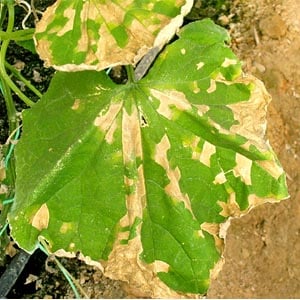 Artek f1;
Artek f1;- Doubler f1;
- Baby crane f1;
- Swallow f1;
- Octopus f1;
- Eaglet f1;
- Semcross f1;
- Swift f1;
- variety Chizhik and others.
The following varieties have the maximum possible ability to bear fruit within 21-28 days with a strong spread of the disease:
- Far Eastern 27;
- Moment;
- Phoenix;
- Phoenix plus.
Varieties with complex resistance to fungal pathogens include:
- Little Cupid;
- Erofey;
- Cascade;
- Whale;
- Lotus;
- Swag.
Hybrids have also been bred, no challengeraising doubts about their resistance to peronosporosis:
- Brunette f1;
- Debut f1;
- Katyusha f1;
- Beauty f1;
- Sturdy f1;
- Frant f1.
Read also:
You will be attracted by its appearance and loved for its taste - the Jubilee Tarasenko tomato.
Conclusion
Downy mildew, or downy mildew, is a fungal infection that can destroy plants and the entire crop within a week. The sources of the pathogen are the remains of infected plants, the spores from which are carried by wind and raindrops. The development of the disease is favored by cool (15-20ºС) and rainy weather.
Chemical and biological fungicides are used as protection and treatment. The use of a combination of agrotechnical techniques (removal of infected leaves, weeding, fertilizing, application of immune stimulants), folk remedies and the cultivation of varieties and hybrids resistant to the disease will help to finally overcome downy mildew.